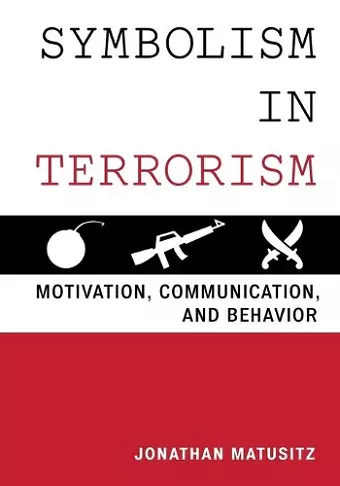Symbolism in Terrorism
Motivation, Communication, and Behavior
Format:Paperback
Publisher:Bloomsbury Publishing PLC
Published:16th Sep '14
Currently unavailable, and unfortunately no date known when it will be back
This paperback is available in another edition too:
- Hardback£102.00(9781442235779)

The symbolic value of targets is what differentiates terrorism from other forms of extreme violence. Terrorism is designed to inflict deep psychological wounds on an enemy rather than demolish its material ability to fight. The September 11, 2001 attacks, for example, demonstrated the power of symbolism. The World Trade Center was targeted by Al Qaeda because the Twin Towers epitomized Western civilization, U.S. imperialism, financial success, modernity, and freedom.
The symbolic character of terrorism is the focus of this textbook. A comprehensive analysis, it incorporates descriptions, definitions, case studies, and theories. Each chapter focuses on a specific dimension of symbolism in terrorism and explains the contexts and processes that involve the main actors as well as the symbolism of both the purposes and targets of terrorism. Also discussed are new religious movements, which represent another important aspect of terrorism, such as Aum Shinrikyo, the Japanese cult that used sarin gas in the Tokyo subway in 1995.
Over forty areas of symbolism are covered throughout the chapters, including physical and non-physical symbolism, linguistic symbolism, the social construction of reality, rituals, myths, performative violence, iconoclasm, brand management, logos, semiotics, new media, and the global village. This allows for an in-depth examination of many issues, such as anti-globalization, honor killing, religious terrorism, suicide terrorism, martyrdom, weapons, female terrorism, public communication, visual motifs, and cyberspace. Main concepts are clearly defined, and followed by theory illustrated by international case studies. Chapter summaries, key points, review questions, research and practice suggestions are recurring components as well. This groundbreaking text encompasses all major aspects of symbolism in terrorism and will be an essential resource for anyone studying terrorism.
This text is so well organized, so well written, and so important, that it should not be limited to college students; it cries out to be read by everyone. We are all involved in terrorism whether as war fighters, potential victims, or as government officials sworn to protect us. Symbolism in Terrorism explains to us what we are up against and why. . . .Symbolism in Terrorism is filled with examples and case studies that provide insight to why terrorists do what they do. . . .I believe anyone who reads this text will be more self-assured and qualified to discuss terrorism. I highly recommend this text and suggest that the State Department, the Department of Defense, the CIA, and others tasked with our defense make it mandatory reading. * Watchdog Wire *
[An] interesting and innovative textbook.... * Perspectives on Terrorism *
This is the most theoretically sound constructed textbook I have ever encountered concerning the semiotics of terrorism, a much neglected subject. Hence, Symbolism in Terrorism will become a classic, a canonical text for those seeking to understand how terrorists communicate their violence. Professor Matusitz has written a tour de force concerning THE semiotics of terrorism. His sweeping knowledge and profound fluency in a number of languages opens the door to understanding ideology, symbolism, culture and violence against a background of even-handedness and profound thinking. Every scholar and student of terrorism including law enforcement, the military, psychologists, and researchers will be indebted to Professor Matusitz for this encyclopedic text. -- Nancy Hartevelt Kobrin, Ph.D., Psychoanalyst and Counter Terrorist Expert, Fellow, The American Center for Democracy
This latest book by Jonathan Matusitz builds upon his well-researched and interesting material produced on communicational aspects concerning terrorists and terrorism. The current book concerns itself with the topic of symbolism in terrorism, giving a comprehensive and balanced academic treatment of the topic from numerous angles. This is an invaluable book on the different issues played by symbolism in terrorism, giving a novel communicational approach where non-verbal cues are every bit as important as the verbal ones. I believe that it will serve as an excellent source of knowledge on this highly actual topic for researchers and students alike. -- Greg Simons, Uppsala University and the Swedish National Defence College
A remarkably comprehensive volume that systematically maps a largely unchartered territory and urges the reader to venture deeper and inculcates an understanding beyond the obvious. A nuanced discussion on the symbolic interpretation of terrorism along with well-illustrated case studies make the book an indispensable resource for all those engaged in exploring the terrorism phenomenon. -- Updesh Kumar, Defence Institute of Psychological Research (DIPR), DRDO, India
ISBN: 9781442235786
Dimensions: 250mm x 178mm x 19mm
Weight: 640g
354 pages